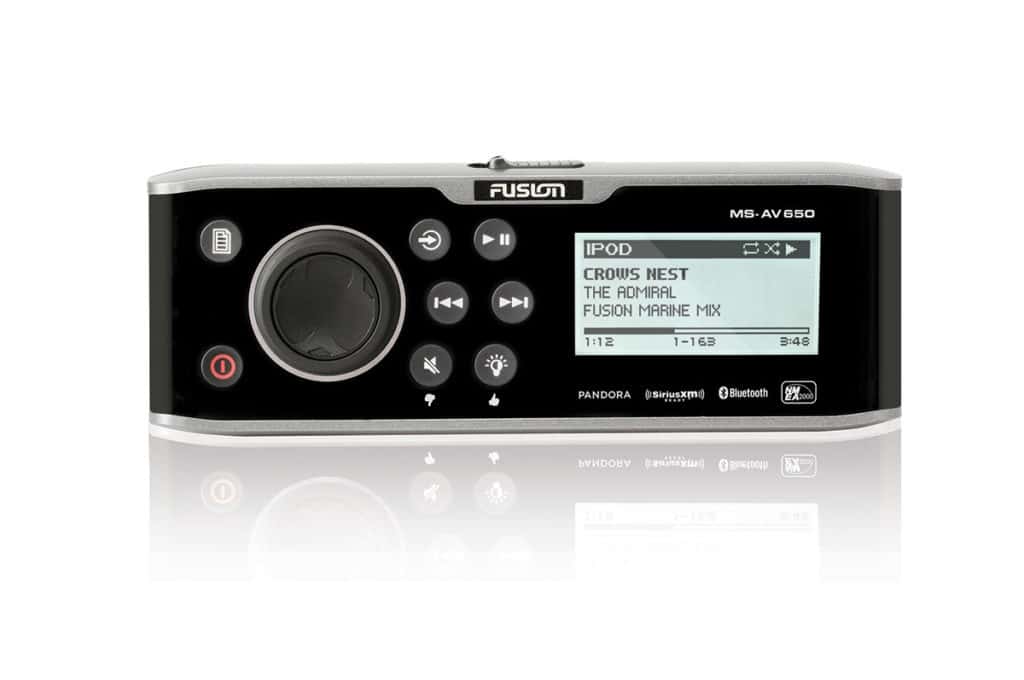
Many stereos are simply marinized car stereos, which are designed to work best in the confined space inside a car, truck or SUV. How well does that actually translate to an open boat where the display and the speakers are exposed to the elements, and competing against inherent wind and engine noise? To get a good idea of what you should be looking for in a true marine stereo, we consulted Todd Crocker of Fusion Entertainment, which builds marine stereos from the ground up. Based on Fusion’s MS-UD750, here’s what to look for in a marine stereo.
1. Bonded Glass Display
To help achieve its IPX6 waterproof rating — which means it can withstand heavy splashing and rain on deck — Fusion uses a one-piece optically bonded glass display to protect it from the elements and prevent condensation from building up inside the display.
2. Oversize Keys
The keys are all the size of the average male index finger or larger to make them easy to locate and press aboard a rocking, rolling boat. Key-function symbols are laser-etched into the rubberized cover so they don’t wear off from salt and ultraviolet exposure.
3. Power Boost
Because the act of marinizing speakers for boat duty makes them inherently inefficient, a good marine stereo employs a large amplifier to provide enough power to each speaker. The 750 uses a digital amplifier that provides cleaner, more efficient power to the speakers than a typical analog amp found in automotive stereos. You can hook it up to four speakers without needing additional external amplification.
4. Oversize Control
Knob Like the function keys, the rubberized control knob is designed to be stable while scrolling through stereo functions as the boat is underway.
5. Remote Control
A good marine stereo should be able to be controlled via a hardwired remote at an alternative location, a NMEA 2000-compatible multifunction display (say, your chart plotter), or an app on your smartphone or tablet. Through FusionLink, you can connect to your boat’s NMEA devices or via Ethernet, if so wired. The app runs via Wi-Fi or Bluetooth.
6. Technologically Adaptable
Bluetooth is hot, but streaming music doesn’t provide the best sound quality. “Bluetooth clips out a range of frequencies, so sound quality is diminished compared to plugging in a device or drive,” Crocker says.
While Fusion’s 750 has high-quality A2DP Bluetooth with AVRCP support, which means you can control streaming music through the head display, it also has an internal (meaning waterproof) docking port for smartphones, iPods and USB drives. It’s also Sirius-ready should you buy the satellite-radio subscription. So directly connect a device for optimum sound.
7. Multizone Capability
Most car stereo systems are designed to fade either in the front-seat or back-seat area. Fusion designed its 750 series to be controlled independently in up to four zones. You can set the volume to different levels for, say, the flybridge, salon, cockpit and stateroom so that everyone can hear it and choose a comfortable volume to his or her preference.








